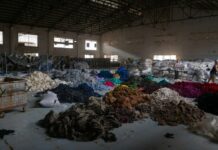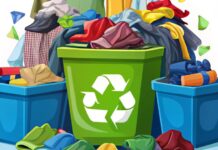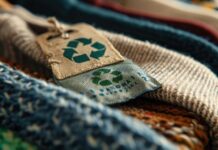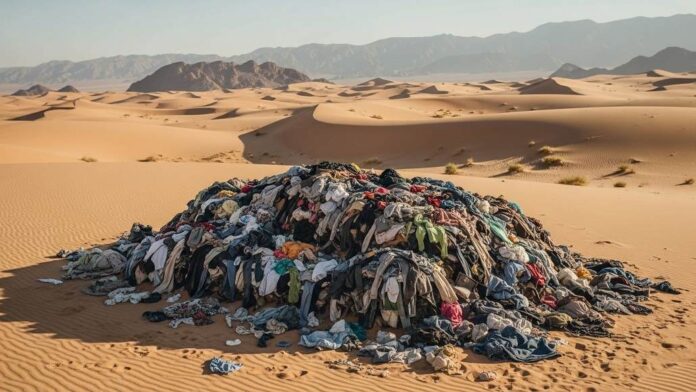Amidst the arid expanse of the Atacama Desert, known as the driest non-polar region on Earth, heaps of discarded clothing lay scattered across the sand, faded and worn from exposure to the relentless sun.
As sea mist envelops the elevated coastal plains near Iquique, Chile’s northern city, the wind stirs plastic bags filled with second-hand garments.
Mountains of clothing stretch into the horizon, comprising shipments of nursing uniforms, bundles of footwear, work overalls, and last season’s fast fashion rejects, many still bearing their original price tags.
In response to the growing environmental crisis impacting the Atacama Desert, Chile’s government has taken a significant step forward. This week, the Ministry of Environment announced that textiles will now be classified as a “priority” category under its extended producer responsibility law. This amendment will hold importers accountable for the waste generated from the numerous tonnes of used clothing brought into Chile annually.
Importers are now mandated to report the textiles they bring into the country, with additional regulations expected to follow soon.
Furthermore, the government is set to release a public policy specifically addressing textiles and their role within a circular economy, with a goal of eliminating textile waste sites within the Atacama Desert.
Government statistics reveal that over 90% of textiles sold in Chile are imported, making it the world’s fourth-largest importer of second-hand clothing. Annually, Chile brings in approximately 123,000 tonnes of used garments, with the most severe impacts felt in the northern regions, particularly the Atacama Desert, which has attracted global scrutiny.
“This will encourage a shift in consumer behavior, as companies will need to provide repair, reuse, and recycling services,” noted Beatriz O’Brien, national coordinator for the NGO Fashion Revolution. “It marks a step toward transforming from a linear model of production, consumption, and disposal to a circular economy for textiles and clothing in the nation.”
Global textile production is expected to rise from 109 million tonnes in 2020 to 145 million tonnes by 2030. In Chile, the average person uses around 32 kg of textiles, contributing to approximately 572,000 tonnes of textile waste each year.
Large quantities of clothing arrive daily at the duty-free port in Iquique, bundled in massive plastic-wrapped bales. Here, they are opened and sorted by a migrant workforce.
The best garments, often in excellent condition, find their way into outlet stores located within warehouses at the port or are sent to Santiago, the capital, for resale. Some are even packaged and shipped back to the US for resale.
The remaining items are transported by small trucks to Alto Hospicio, a lower-income city perched on the plateau above Iquique, where they enter a seemingly endless cycle of resale and reuse.
At La Quebradilla, one of the largest open-air markets in Chile, vendors sell clothing for low prices, while the least desirable items are often discarded in the Atacama Desert. Some of these discarded garments are burned, sending thick black smoke billowing from a makeshift dump on a high plateau outside Alto Hospicio.
After years of research, Chile’s government has successfully amended its extended producer responsibility law to include textiles. While many nations have similar legislation, Chile’s law, in effect since 2017, previously only mandated producers to recycle specific categories such as tires, batteries, oils, and plastic packaging.
“The inclusion of textiles in the producer responsibility law will clarify the obligations of manufacturers, who can no longer ignore the environmental consequences of unused textiles,” said Chile’s Environment Minister, Maisa Rojas. “Effectively applying this law will help us address the regulatory gaps in the industry that have resulted in substantial waste and have negatively impacted both the environment and people’s quality of life.”


































